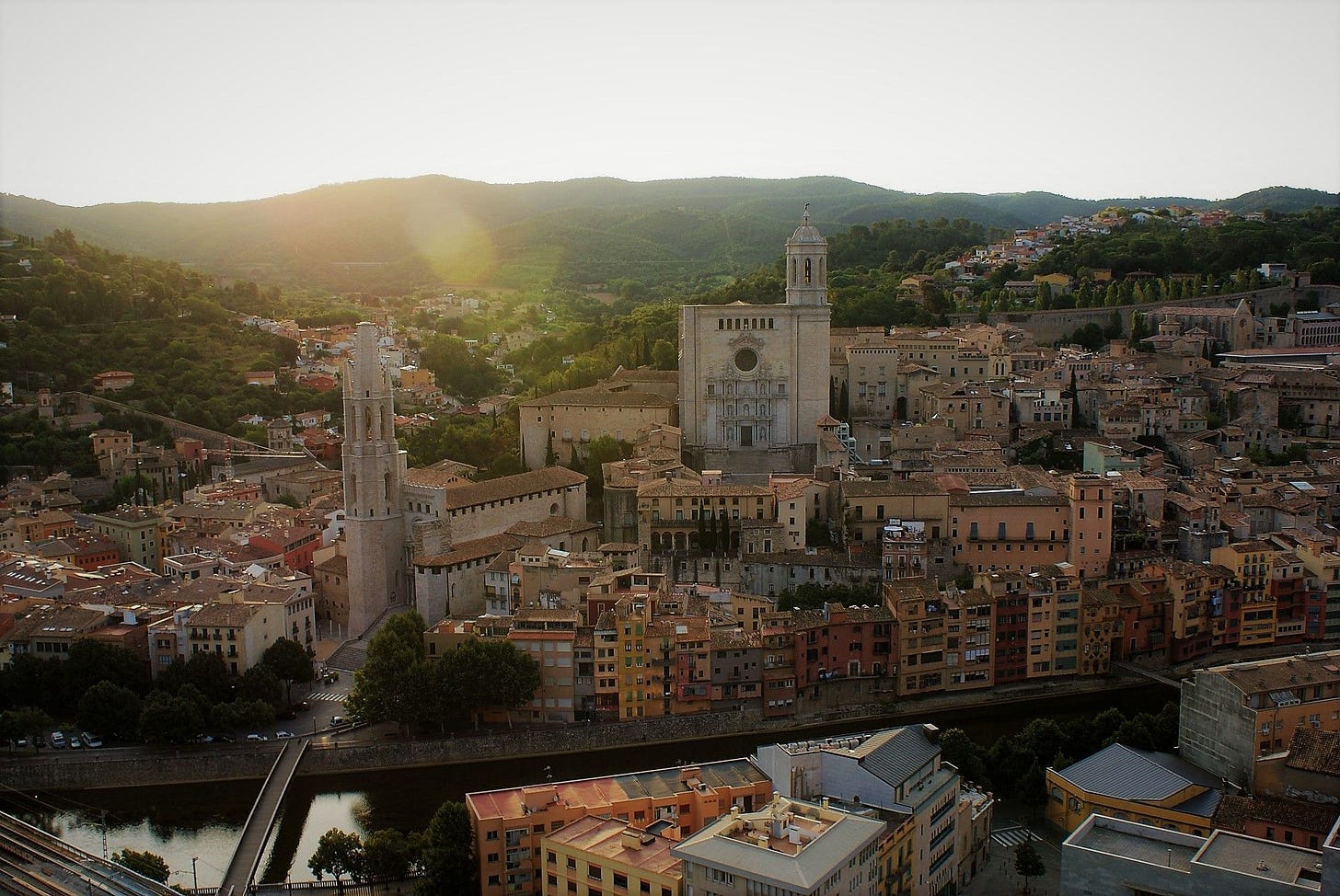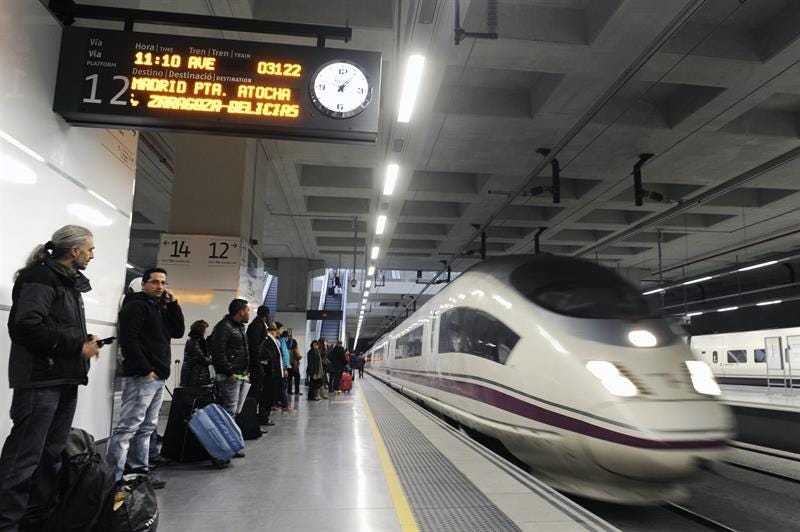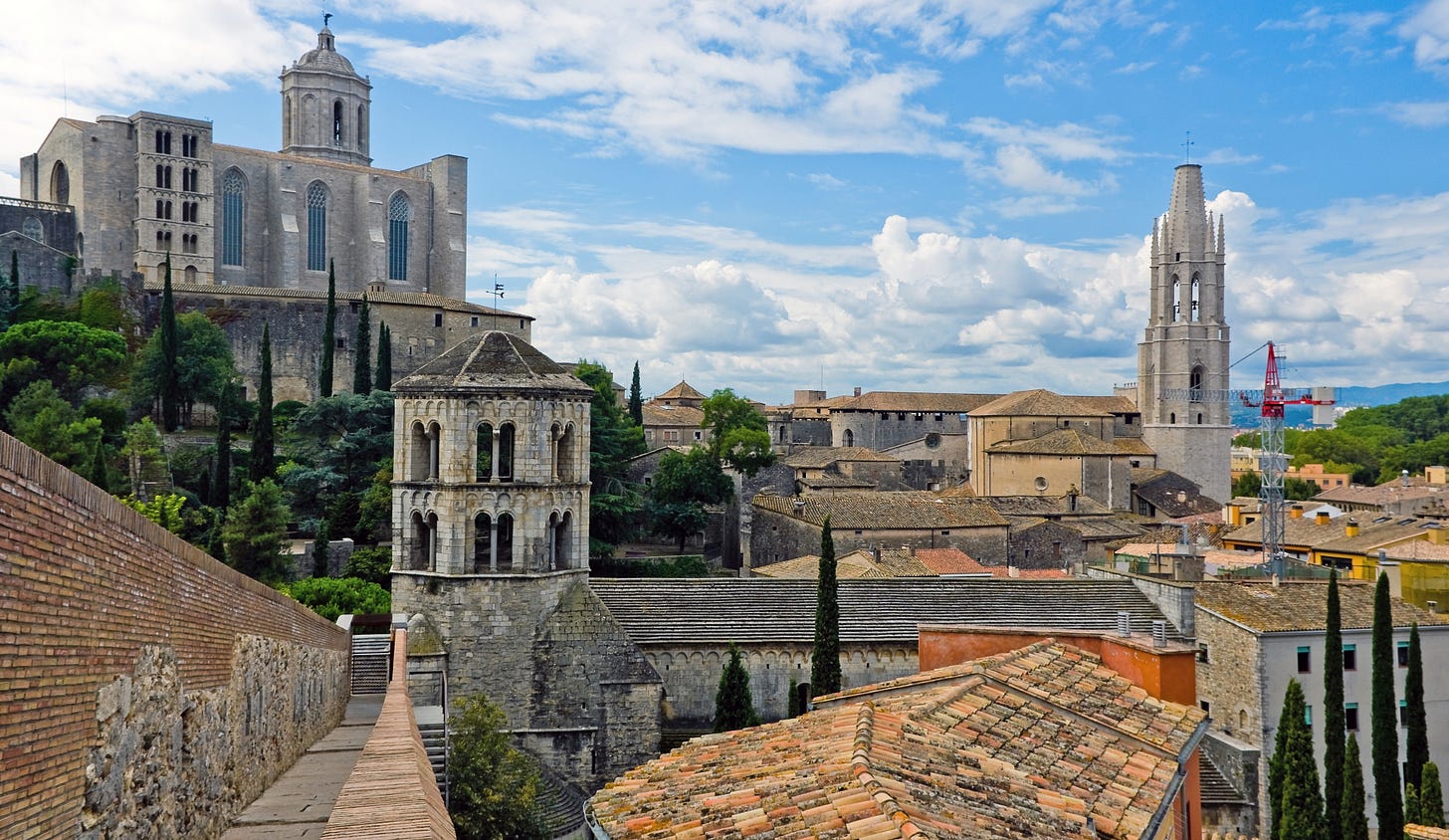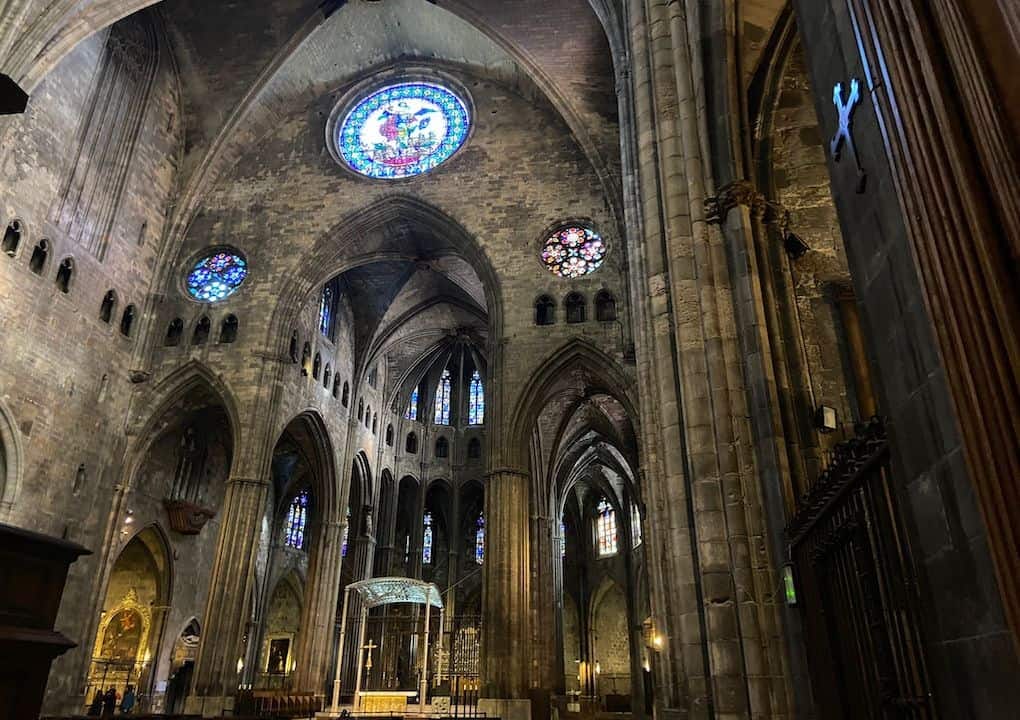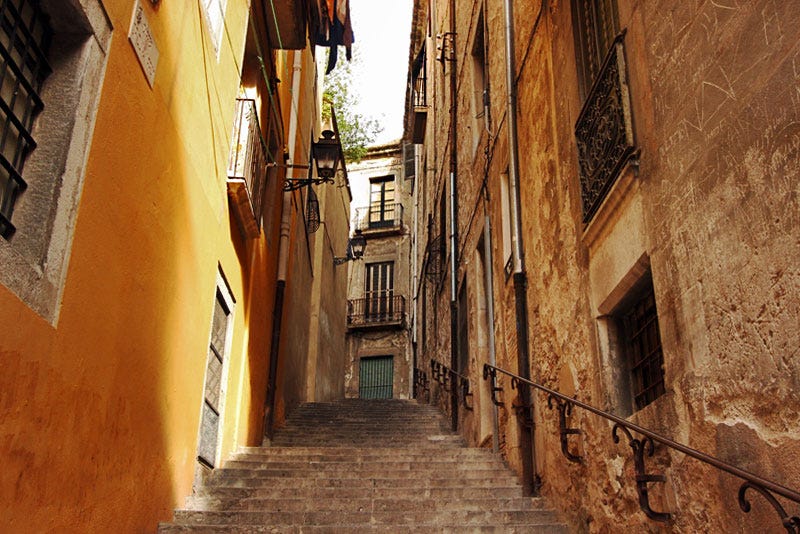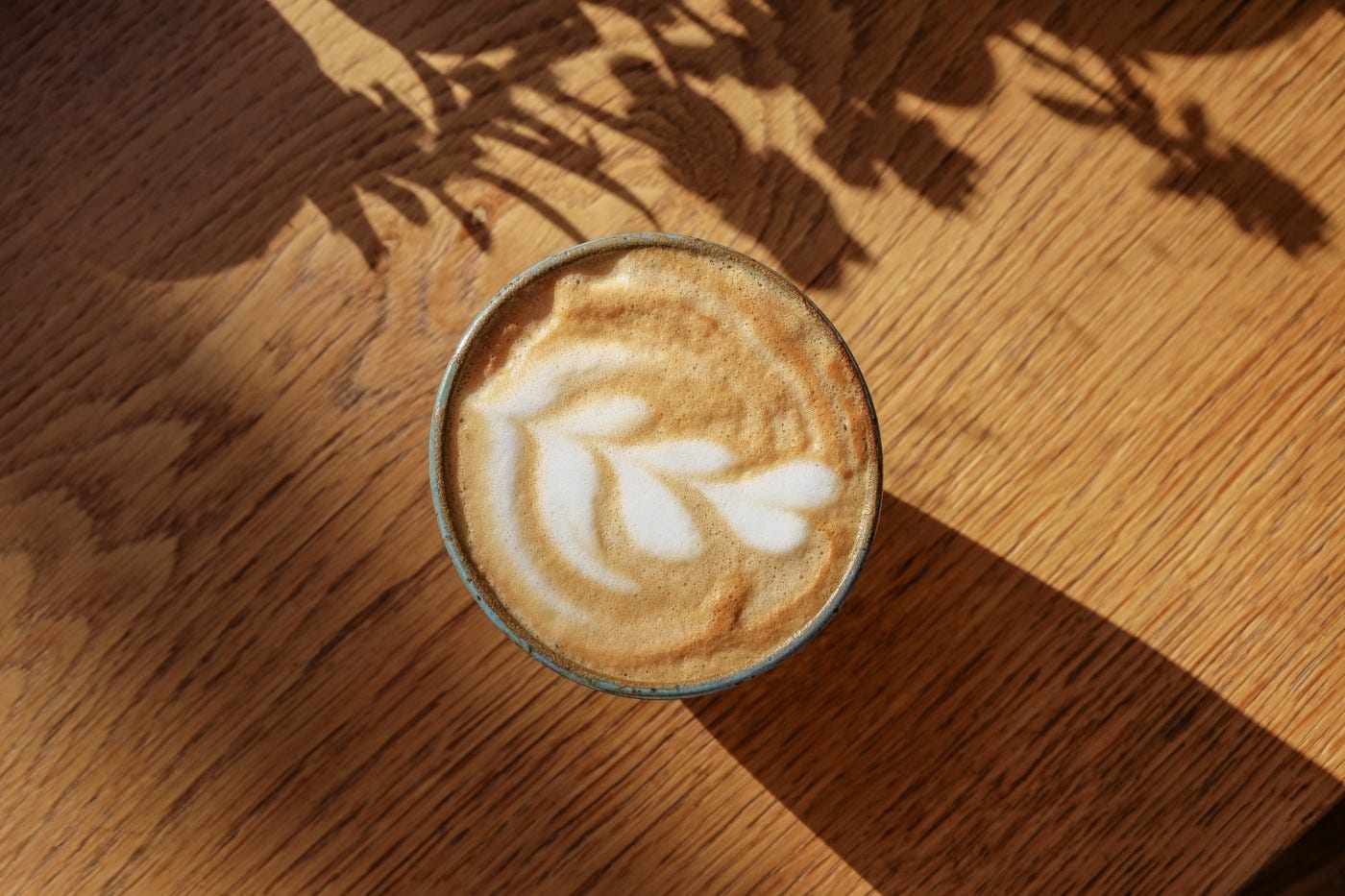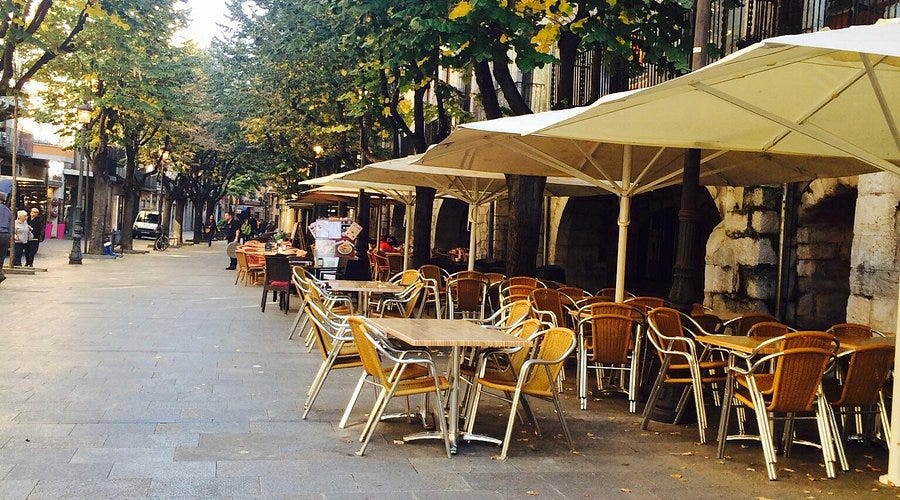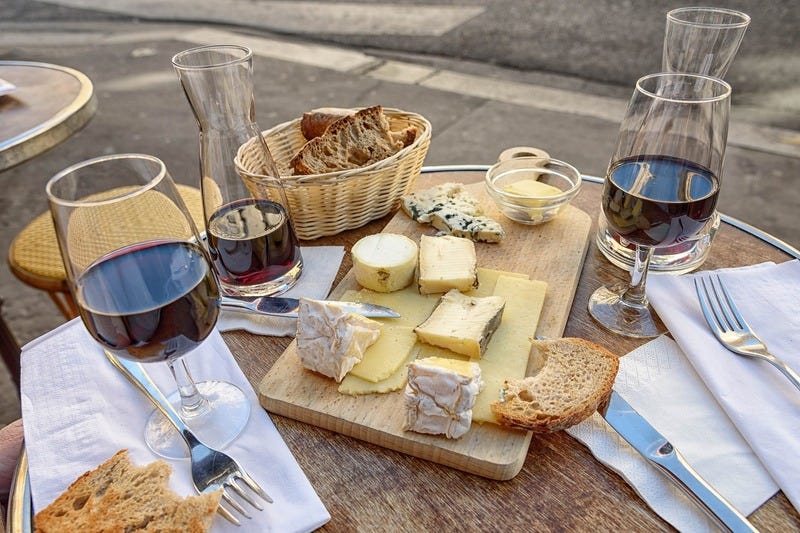Girona, The Magical Spanish City That Seeped Into My Soul
Girona was a city that rewarded patience. To really know it, you had to linger here, letting the city seep into your skin slowly. Until it was part you, forever.
Girona, Spain. The first time I visited, it was on one of those canned, bus tours. The ones that leave you with little time to truly immerse yourself and explore your surroundings. To pause and taste. To meander and lose yourself for the moment. It was one of those tours that gave you a small taste and always left you just hungry enough to want to return. This time, I came back to Girona for the same reason you return to a favorite bar or a favorite restaurant. Years after you have that last sip or the last bite off a sampler plate that teases you and only manages to give you a small taste. It was unfinished business. It was perhaps a hunger not sated. Maybe it was a memory that somehow sat at the back of your thoughts, only emerging late at night, gnawing at you as you toss and turn in your bed, unable to sleep. The first time, I was a tourist with a ticket and a checklist. I was the kind of guy who saw a city through a camera lens and the sound of a ticking watch. The kind of tourist who didn’t see a place through the soles of my shoes. This time however, I came to walk. I came to taste. I came to breathe in Girona slowly and deeply. I came to see if the city was as magical as I remembered it to be—or if I’d just been drunk on the idea of Spain and its rich history.
The high-speed train slowly rolled in from Barcelona, casually pushing into Estació de Girona as though it had all the time in the world. Passengers all began to rise and remove their suitcases and bags from the overhead bins, as they stood in the walkway, checking their phones and glancing occasionally at their watches, eager to disembark. Girona greeted me warmly. With two kisses—one on each cheek. It welcomed me with the same old stone, the same ancient river, and the same sense that history here wasn’t something that I should breeze through casually. Rather, it was something that I needed to lean into, to breathe in, and to welcome fully as though I was returning home. As the train came to a final halt, and the doors slowly hissed open, I waited patiently as passengers spilled out onto the platform. Baggage bumping haphazardly against the train steps as other tourists clumsily ambled by. I stared out of the window, realizing I was the last one in the railcar, grabbed my travel bag slinging it over my shoulder, and headed down the train steps, out of the station, and straight for the Passeig de la Muralla—the old city walls. The Romans built these walls. Or at least they started the job. Every century since has left its fingerprints along the stonework—repairs, additions, scars, time. Walking those walls was like reading a manuscript. It was the story of Girona written and rewritten in stone, mortar, blood, sunlight, and darkness.
As I strolled, the old city sprawled out like a red carpet below me. Terracotta roofs and church spires lurched upwards as the Onyar River sliced through the middle like a lazy knife. Even in the thick, wet summer heat, the air was sharp, clean, and had a reminder of spring still lingering in the shade. I walked the length of the city walls, pausing at the towers to look out over the countryside. The Pyrenees Mountains crouched on the horizon like old groves that cut through the countryside. I ran my fingers against the ancient stones feeling the uneven placement. Parts of the wall had been rebuilt after the city outgrew its medieval skin. The city expanded and burst through its fortifications, but the ghosts didn’t seem to mind. They clung to the rocks, still perched on their stone pedestals as they silently watched me walk among them. I was a foreigner with a notebook, a satchel, and a head full of questions. Even still, I remained silent, asking one after another in my head, even as each one would forever remain unanswered.
I descended into a sea of tourists, dropping down into the maze of the old town—the Barri Vell, Girona’s old quarter. It was a place that was ripe for exploring and strolling. A fascinating mix of centuries of architecture that wounded its way around the heart of the town. Here, the stones were slick, marked endlessly with the passage of time and the countless touch of people. The alleys twisted just enough to always make you wonder if you were lost or on the right track. I made my way towards the Catedral de Girona. It was easily the most visited tourist attraction in the city. It was a place that year after year saw millions of tourists flock to it from around the world. Its historical relevance was irrefutable. However, its appearances in film and television definitely elevated its point of interest with everyone who visited the city. The cathedral sat at the city’s highest point and dared every patron to climb the ninety steps of its baroque staircase to the top. If you wanted to see it, you would just have to work for it. I took the stone steps slowly, feeling the slow burn building in my calves. Climbing to the top was rhythmic, subtle, eye-opening. The closer I got, the further the cathedral seemed to move away. The anticipation in my chest was building with every push, every step and every bead of sweat that rolled down the middle of my back.
Reaching the top initially felt like a reward. However, stepping inside, that was real prize that was given for the effort. The nave was a cavern. It was wide, nearly impossibly wide. It was the kind of space that made you whisper, even if you were alone. I craned my neck upwards, yearning to take in every detail, every brick. It was the widest Gothic nave in the world. As I turned on the spot, it was impossible not to feel completely in awe of this massive cathedral. Standing here, I understood why people once believed in miracles and monsters. Light slanted through stained glass as it painted the stone in bruised colors and bright hues that livened the dull stone. I wandered through the center, not knowing where to look first. I paused every few steps, mostly to take in the gargantuan piece of human ingenuity, and let the silence settle in around me. The Tapestry of Creation hung in a side chapel. It was a thousand years old, probably dating from the 11th or 12th centuries, although no one knew for certain. It was threadbare. It was luminous. It was magnificent, My eyes ran across the needlework as angels and beasts, religion and faith, all combined into a swirl of color and theology. I stood in place for a long time, as the minutes ticked by, and the tourists shuffled past me. I was lost along the stitching, lost in my thoughts, and managed to take in a piece that I barely had time to enjoy before. So many people had touched and witnessed this special piece of history. From the hands that spun the work together, to the eyes that marveled at its complexity, to the stories it was meant to tell—some known, and some lost in time.
I strolled back outside into the open air, the sun scorching my skin, my eyes adjusting to the brightness, as the city pressed in around me. The streets narrowed quickly as I descended from the cathedral and made my way to the Basilica de Sant Feliu. Before the Catedral de Girona, the basilica was Girona’s main church. The Romanesque bones of the old building were still visible beneath the later Gothic skin that was drapped across it, hiding the older construction. I walked inside to escape the scorching sun, past the heavy doors, and towards the famous sarcophagi. In total, there were eight of them. They lingered here inside these ancient walls, watching time pass at every angle. These were early Christian and Roman beauties, all dating back to the 3rd and 4th centuries. I meandered slowly across the floor, letting the centuries pile up around me, feeling the weight of time swirl around my head in a maddening blur. The gothic tomb of Narcissus of Girona slowly came into focus. An early bishop of Girona, his tomb stood resolute, draped in legend and marble. There were many who had stopped to pray by his side, saying silent words that were barely audible in the air. I stopped, but I didn’t pray. Instead, I paid my respects. In places like this, you don’t need faith to feel reverence. Just a respect for the time and tradition of the people who built these wonders that have stood the test of centuries, invaders and change.
I wandered the city at my own pace, letting the rhythm of Girona overtake me. When you don’t really have a destination in mind, sometimes, the destination finds you instead. In this instance, I found myself in the Jewish Quarter, El Call. This quarter was a labyrinth of cobbled alleys and medieval stone. Turning right and left to get every view and every angle was a visual treat, as it was one of the best-preserved Jewish Quarters in Europe. The Jews came here in the 9th century and built a community from scratch. They created a life, and made a legacy. By the 15th century however, the Jewish people were all gone. It’s a terrible thing to look back on history, and see the terrors that one group might inflict on another. Like in so many other parts of Spain, the Jewish people were expelled, and in some cases, not given any choice at all to select their fate. But, here, the streets remember. The ancient names linger on doorways, even though the mezuzahs had long since been pried away leaving no trace of their existence. I walked these alleys, letting my fingers trail along the rough stone walls. I tried to feel the weight of history on my skin. Reading the stone for any signs of what these people experienced. What they lived through. The Jewish Quarter was a place to get lost, to stumble on hidden courtyards and secret gardens. It was a place where you could duck into tiny shops and coffee houses that were hidden in plain sight, tucked behind ancient arches.
The afternoon heat had began to gently wear on me, and I finally gave into my craving for a badly needed coffee. I stopped at Originem, a café with just enough hipster cred to serve up avocado toast. While this was generally considered a California creation, here in Catalan, this dish was known as torrada d’alvocat, tomata, espècies i oove de l’empordà. It was fucking good! God! It was better than good. Actually, the bread delicious. It was thick and chewy. The avocado was ripe and perfect. The olive oil was peppery and green. The olive oil. There was another gift from Rome. And just as I reminisced on the eternal battle between Italy and Spain as they fought over whose olive oil was better, my cappuccino was delivered by the barista. I sat by the window and watched the world go by in a blur of people. Tourists with maps. Locals with groceries. Lovers with secrets. Children without inhibitions. And parents with patience. The city hummed around me. I sipped. I ate. I was alive. And I was absolutely indifferent.
People-watching in Girona was a sport. In reality, if you think about it, people watching anywhere in Europe is a fascination. You see the whole spectrum, every angle. Some you expect, and others that completely surprise you. As always, there were the hurried. The lost. The content. The bored. The annoyed. The curious. I sipped my coffee and tried to guess their stories. The old man with the cane and the battered hat, who was sitting on the stone bench with another friend fairly close to his age—he was he born here, or maybe he came back. Was he like me? Was he chasing ghosts too? The young couple arguing in what sounded like rapid fire French—what were they fighting about? Love? A misunderstanding? Or perhaps something as trivial as dinner plans? Girona didn’t judge. It just watched. It was patient. It was as eternal as its stone skeleton. I didn’t judge either, just watching the human theatre unfold before me. Visitors and tourists alike, all together, in one place, at the same time. It was magic. And, it was utterly and totally sublime.
I finished the last sip of my coffee, inhaling in the final drops of foam from my cup. I smeared my bare finger across my plate, gathering up the last remnants of the green olive oil and bright avocado, as I brought it up to my lips to enjoy. I paid my tab, and wandered back into the narrow streets of the city. The sun had dropped as shadows stretched and slid along the stone walls, long and thin, stretching into the distance. I made my way casually down the Rambla de la Libertad, the city’s beating heart and flowing soul. It was a pedestrian avenue that ran alongside the Onyar River from the Pont de Pedra to Argenteria Street. Shops, restaurants, bars—life. Everything and everyone you could imagine spilled out onto the street. Laughter, music, and the clink of glasses all reverberated around me, creating the sound of the neighborhood and the roar of Girona. The architecture here was a mix of old and even older. There were fascinating arcaded walkways, gorgeous wrought-iron balconies, and the old but beautiful facades that were painted in sun-bleached yellows and reds.
I walked the length of the Rambla slowly, weaving between pedestrians, and let the city guide me forward. The Onyar River glinted in the fading light, the famous hanging houses reflected in the water. They were a splash of color against the stone. I turned and enjoyed the view of the famous Eiffel Bridge. It was a spidery red lattice built by Gustave Eiffel's company before he embarked on the construction of the Eiffel Tower in Paris. It stood the test of time and footsteps, casually stretching across the river. As the sun set on the city, Girona softened its gaze. The tourists slowly drifted away, back to their hotels, or their trains back to Barcelona. The locals came out. And all once, Girona gently exhaled. I found a table at a bar, asked to sit, and ordered a glass of a local red. I watched the sky turn from gold to indigo, sipping slowly and looking past the blur of people that sat around me and chatted into the evening. The air was thick with the smell of grilled meat, garlic, and something definitely sweet.
Girona was a city that rewarded patience. While you could see it in a day if you wanted to, you wouldn’t really be able to feel it. To really know Girona, you had to linger here. You needed to let the city seep into your skin slowly. You had to walk the walls. You had to climb the steps. You needed to get lost in its alleys. You needed to pause at a local bakery and taste the bread. You needed to sit at a table and drink the wine. You had to listen to the stories that were constantly being whispered by the stones that surround the city. Could you hear it? Listen. It was the laughter echoing off the river. It was the deafening silence inside the cathedrals. I came back to Girona because I wasn’t finished with it. Even after today, I’m still not. Cities like this—they don’t just let you go. They haunt you, in the best possible way.
So take my advice. Wander. Let your feet decide the path. Find a new favorite café. Turn into a new alley to get lost. Discover a new story to tell. Stop at a local bar. Grab a tapa. Order a glass of something red that was made in Empordà. Silently toast this magical city, its ghosts, its history and its hunger. When you eventually stumble into Girona, do yourself a favor—slow down. Walk the walls. Get lost. Taste everything. Listen to the city. It has stories to tell. And if you’re lucky, if you’re really fucking lucky, it might just let you in on a few of its secrets. And before long, you’ll find out that you’re not the same person who arrived.




